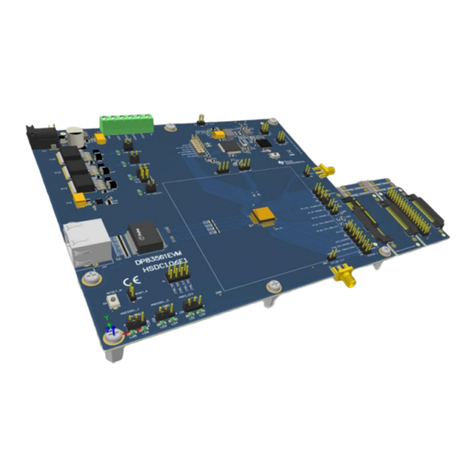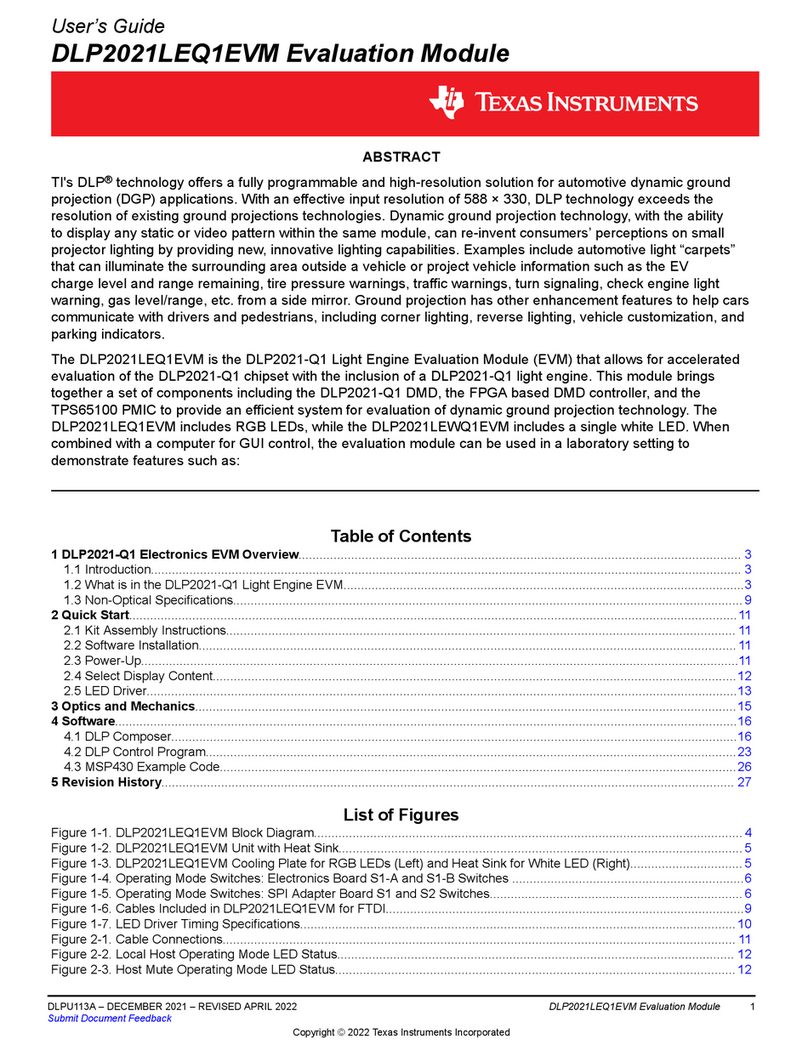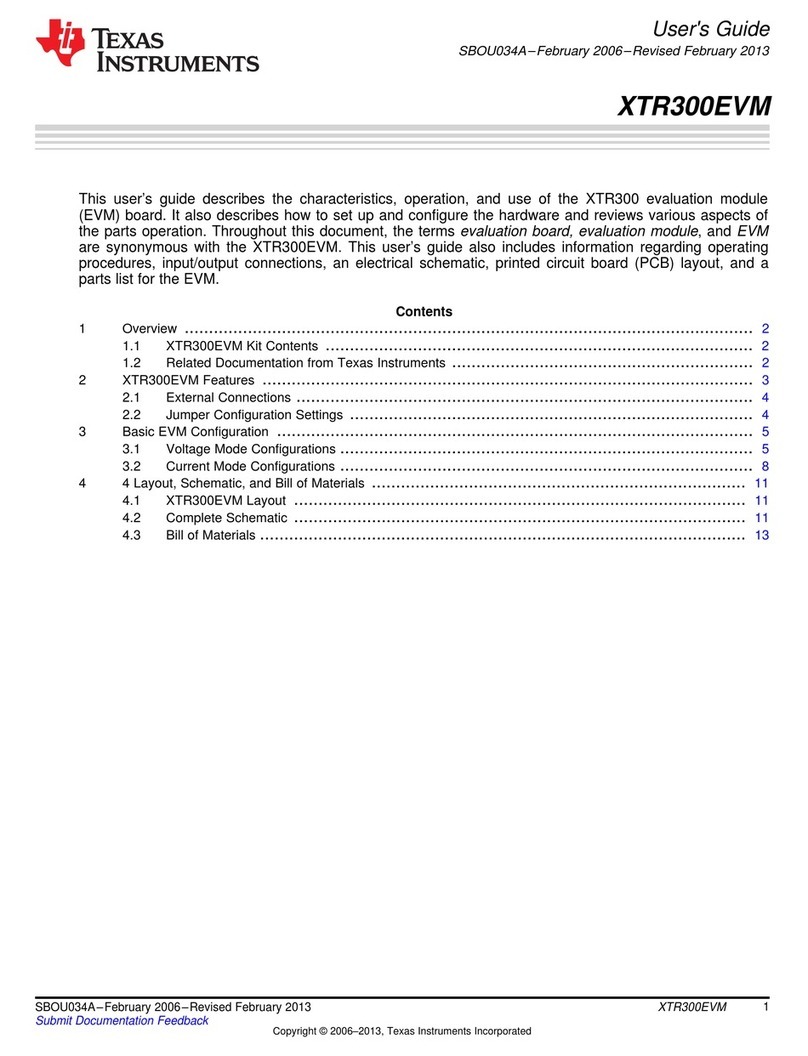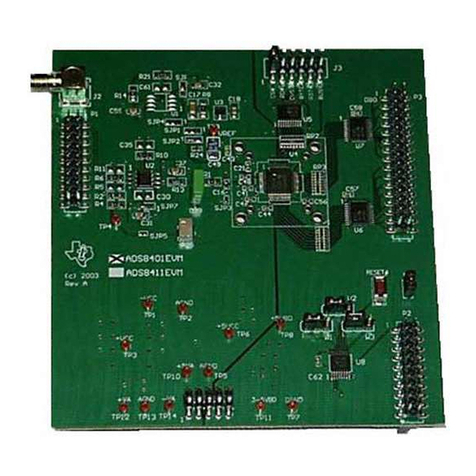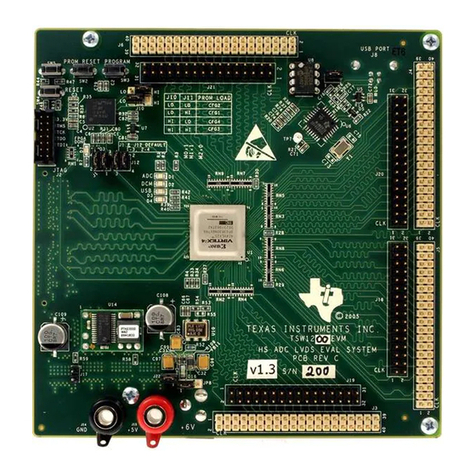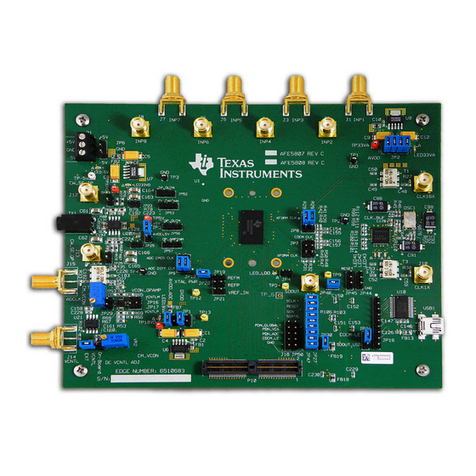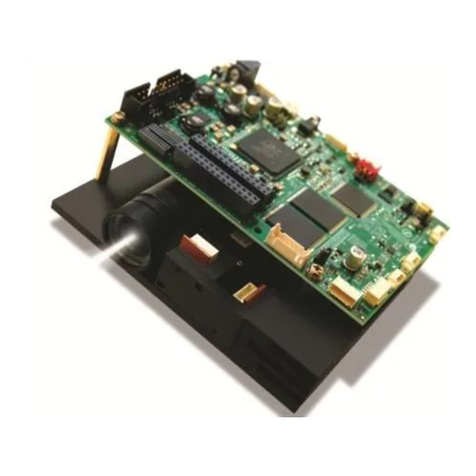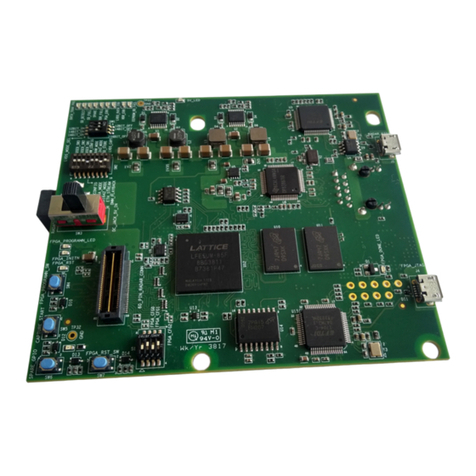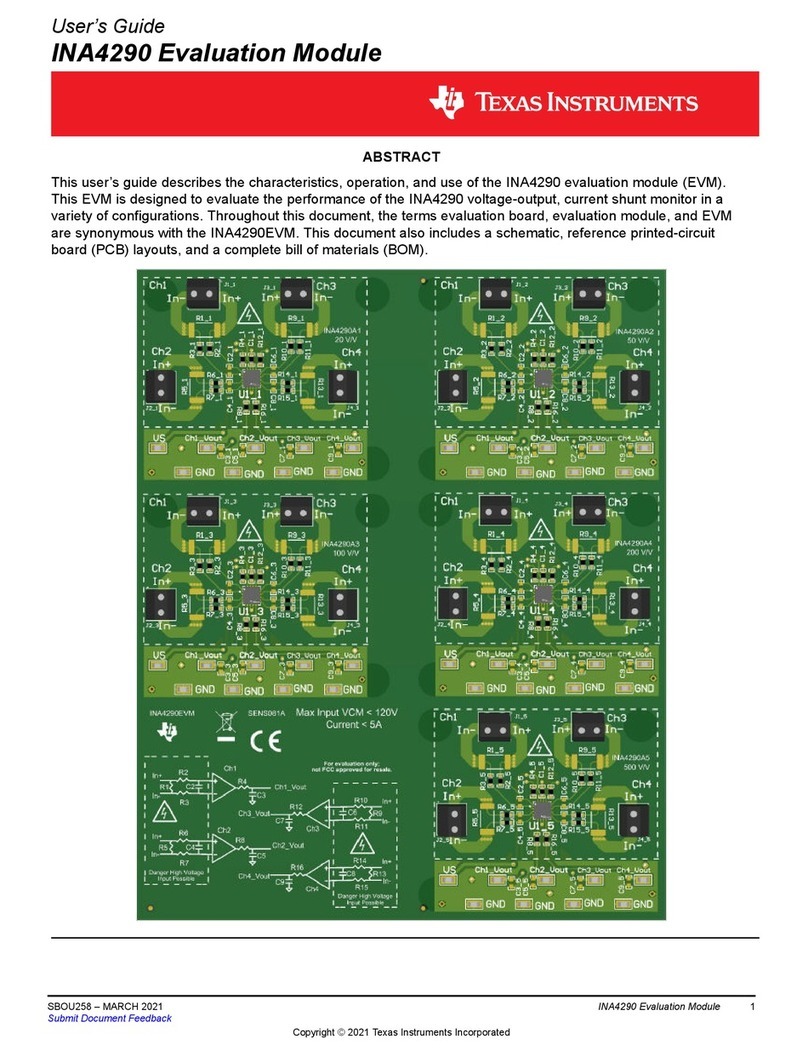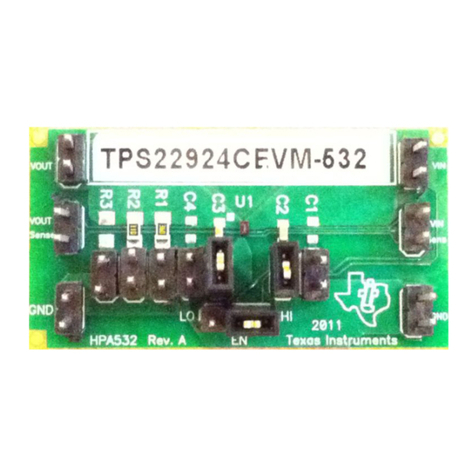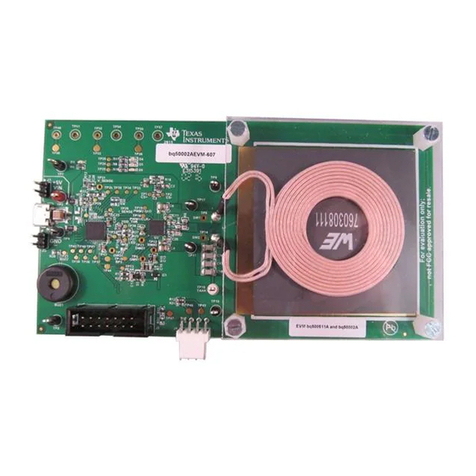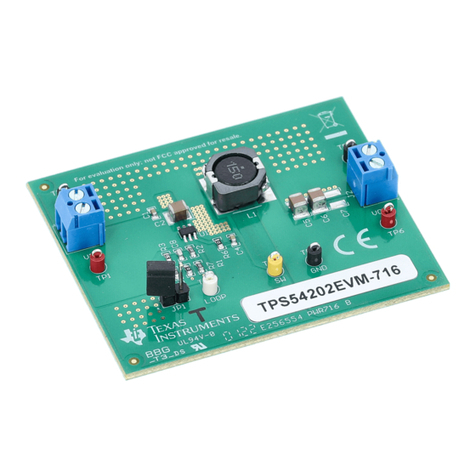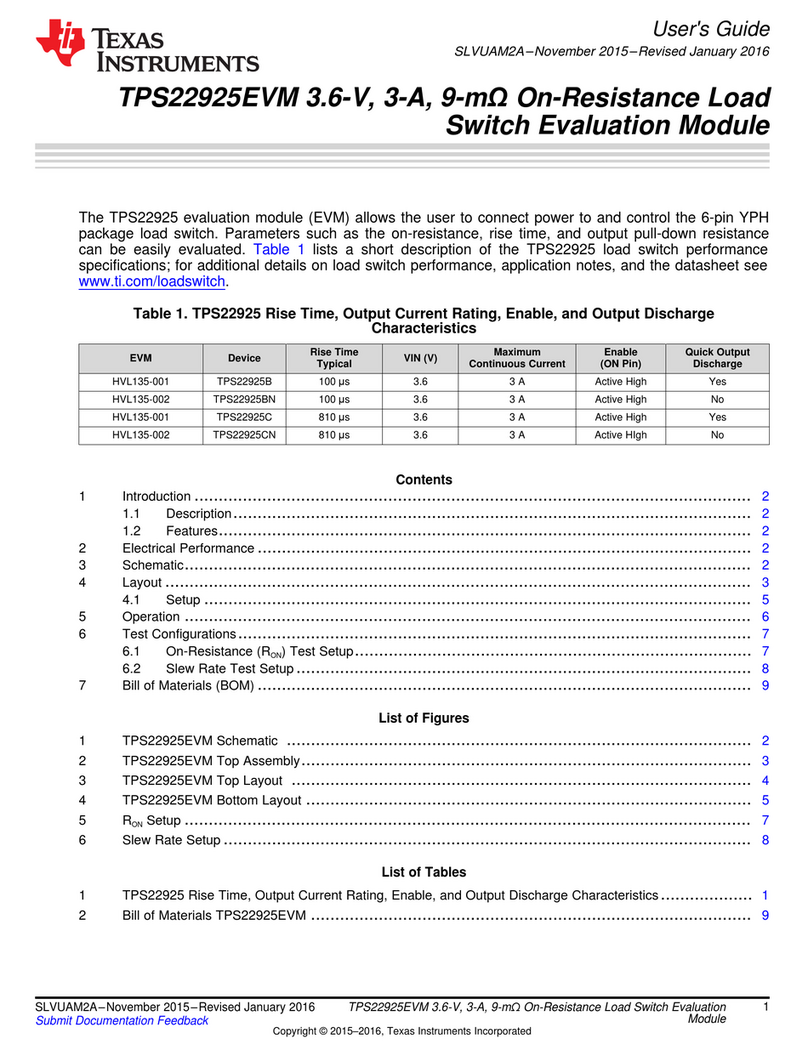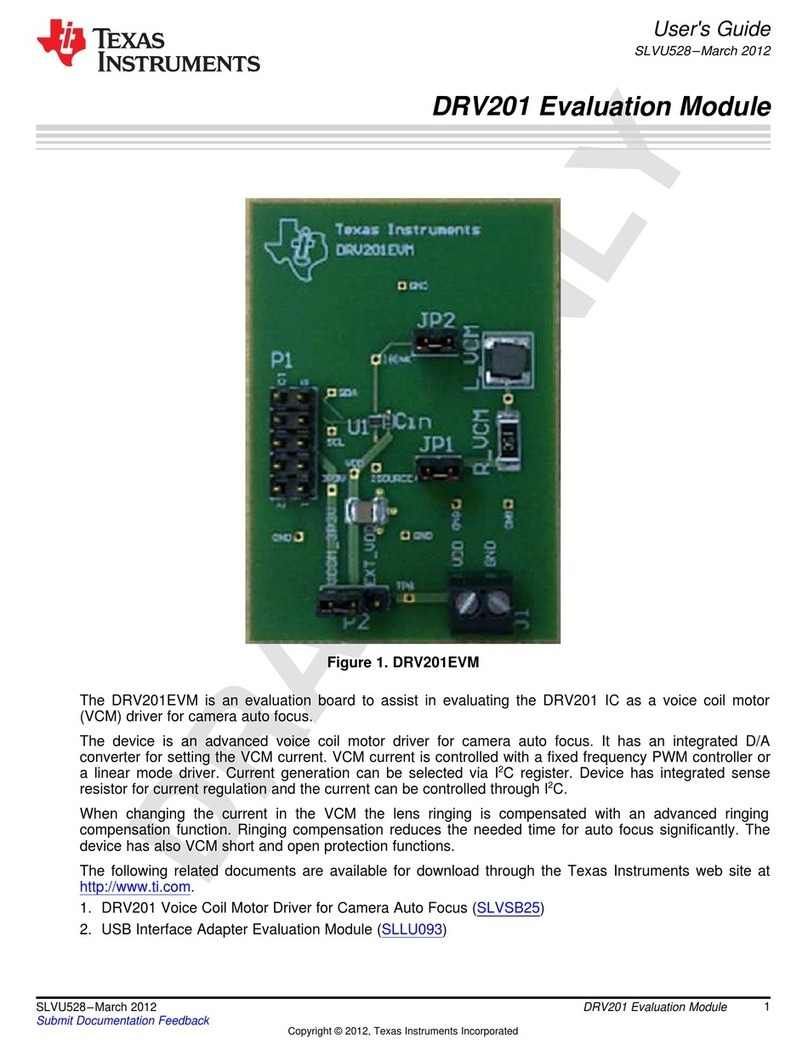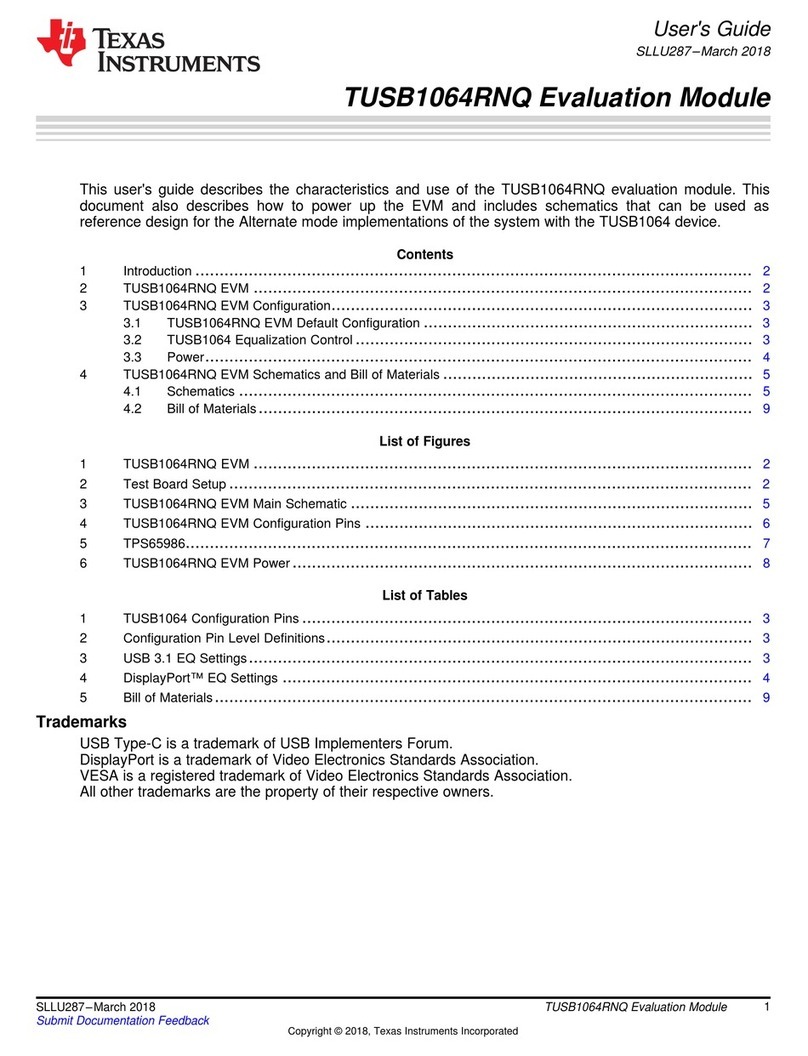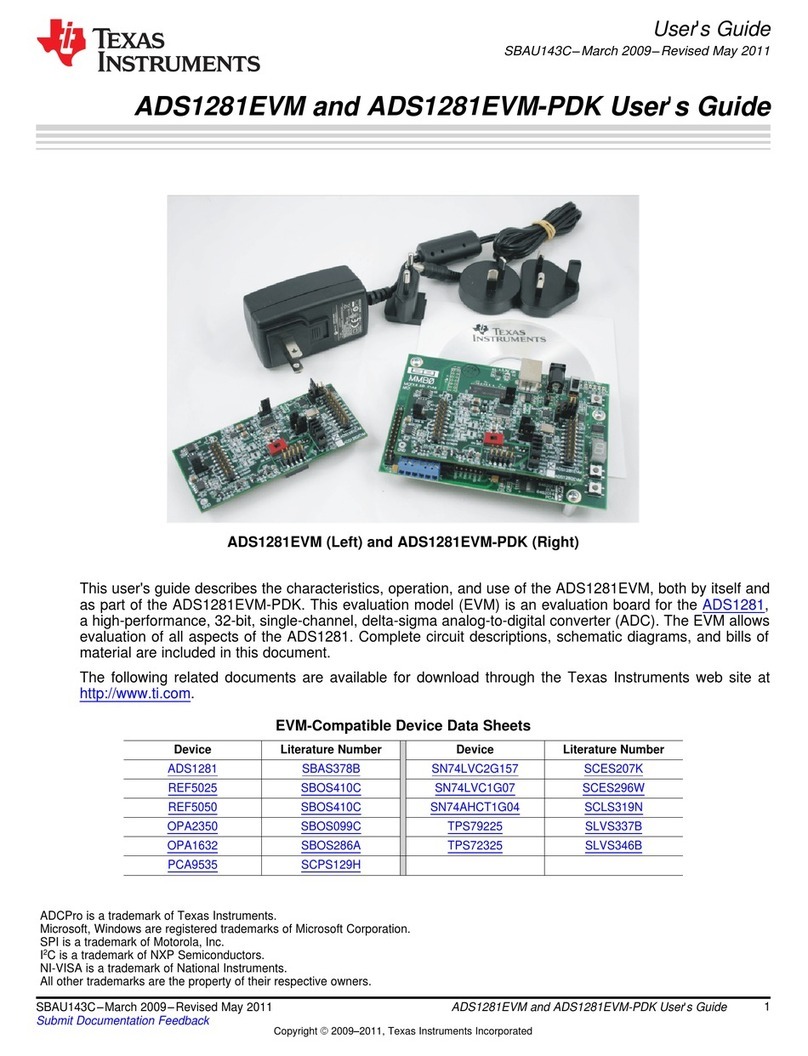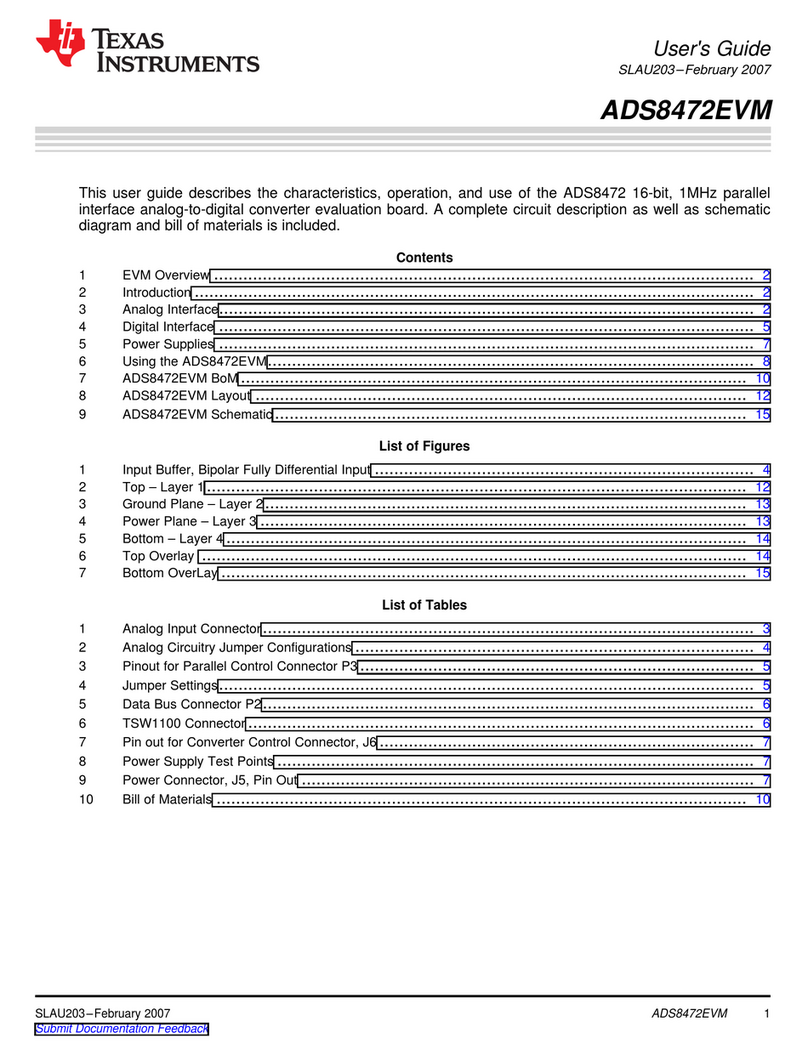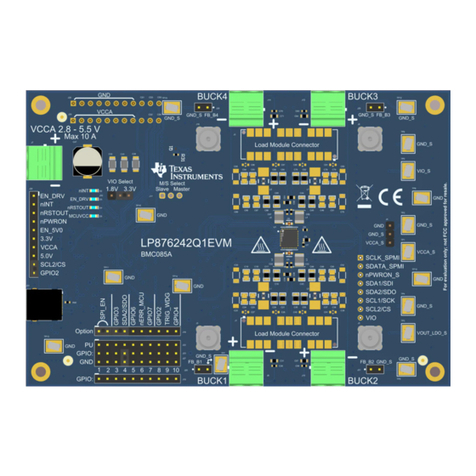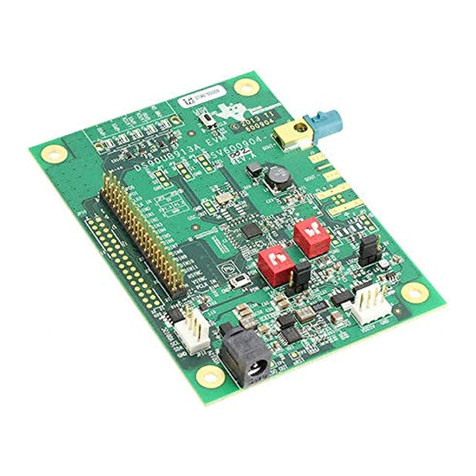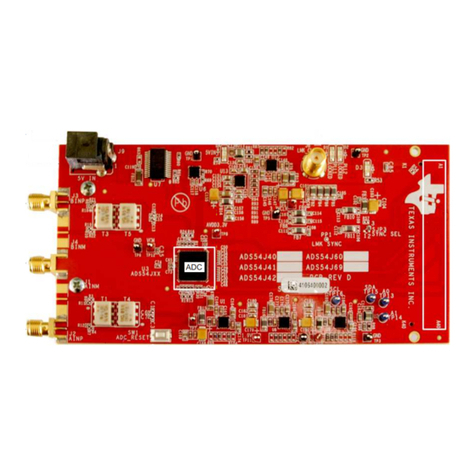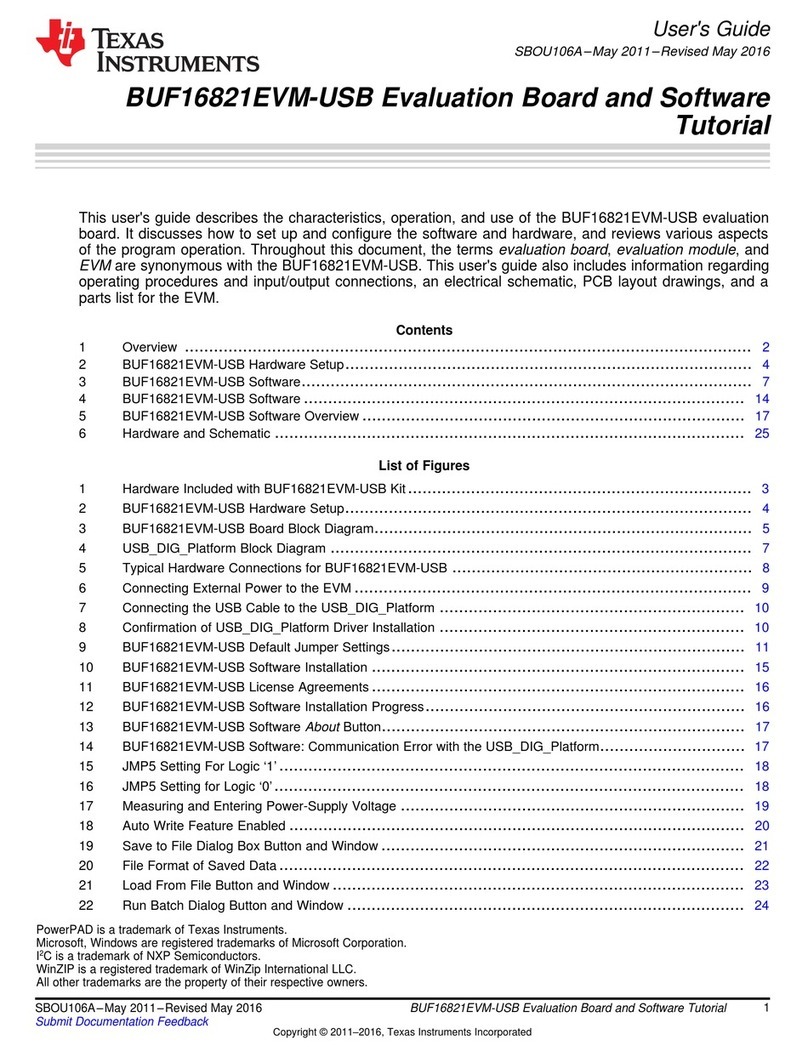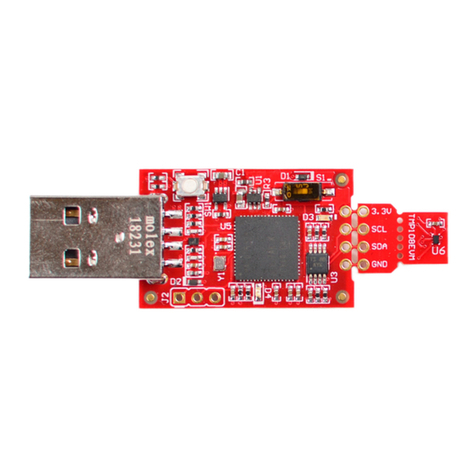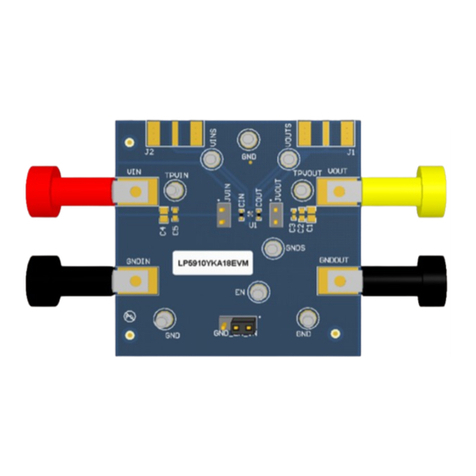
Table of Contents
1 Overview..................................................................................................................................................................................3
1.1 Related Documentation......................................................................................................................................................3
1.2 Electrostatic Discharge Caution......................................................................................................................................... 3
1.3 Hot Surface Warning..........................................................................................................................................................3
2 EVM Circuit Description.........................................................................................................................................................4
3 Jumper Settings......................................................................................................................................................................5
4 Power-Supply Connections................................................................................................................................................... 6
5 Input and Output Connections.............................................................................................................................................. 7
6 Modifications...........................................................................................................................................................................9
7 Schematic, PCB Layout, and Bill of Materials......................................................................................................................9
7.1 Schematic.......................................................................................................................................................................... 9
7.2 PCB Layout........................................................................................................................................................................ 9
7.3 Bill of Materials.................................................................................................................................................................15
8 Revision History................................................................................................................................................................... 16
List of Figures
Figure 2-1. INA851EVM Simplified Schematic............................................................................................................................ 4
Figure 3-1. INA851EVM Default Jumper Settings....................................................................................................................... 5
Figure 4-1. INA851EVM Voltage Supply Connections.................................................................................................................6
Figure 5-1. INA851EVM Input and Output Connections..............................................................................................................7
Figure 7-1. INA851EVM Schematic.............................................................................................................................................9
Figure 7-2. Top Overlay PCB Layout.........................................................................................................................................10
Figure 7-3. Top Layer PCB Layout.............................................................................................................................................11
Figure 7-4. Ground Layer PCB Layout...................................................................................................................................... 12
Figure 7-5. Power Layer PCB Layout........................................................................................................................................ 13
Figure 7-6. Bottom Layer PCB Layout.......................................................................................................................................14
List of Tables
Table 1-1. Related Documentation.............................................................................................................................................. 3
Table 3-1. Default Jumper Configuration..................................................................................................................................... 5
Table 4-1. INA851EVM Supply-Range Specifications................................................................................................................. 6
Table 5-1. INA851EVM Input and Output Connections............................................................................................................... 8
Table 7-1. INA851EVM Bill of Materials.....................................................................................................................................15
Trademarks
All trademarks are the property of their respective owners.
Table of Contents www.ti.com
2INA851 Evaluation Module SBOU273A – FEBRUARY 2022 – REVISED NOVEMBER 2022
Submit Document Feedback
Copyright © 2022 Texas Instruments Incorporated
